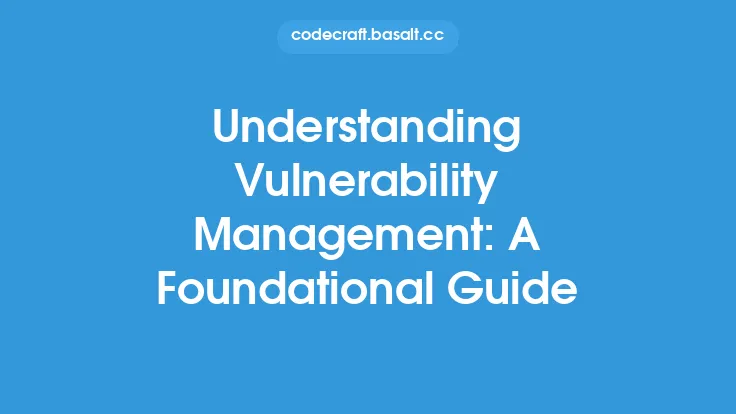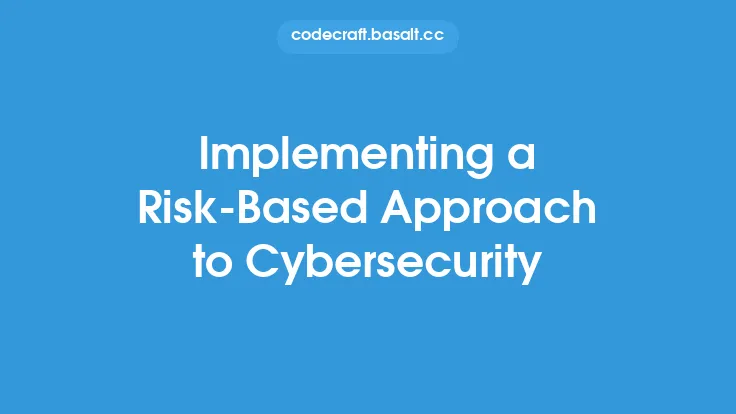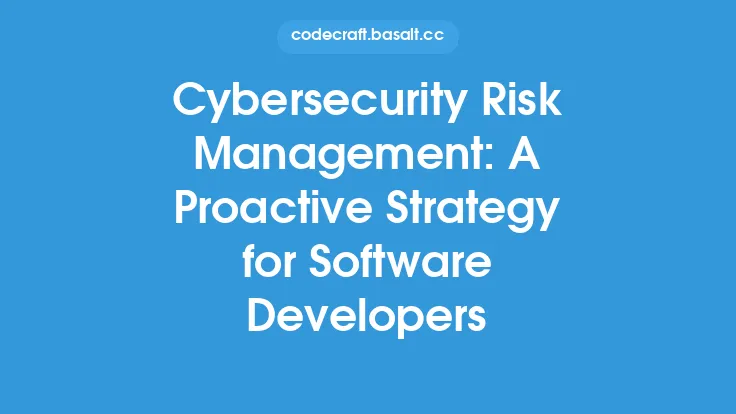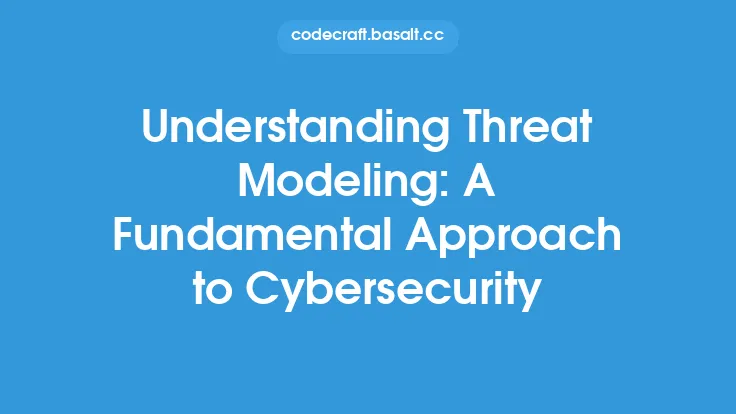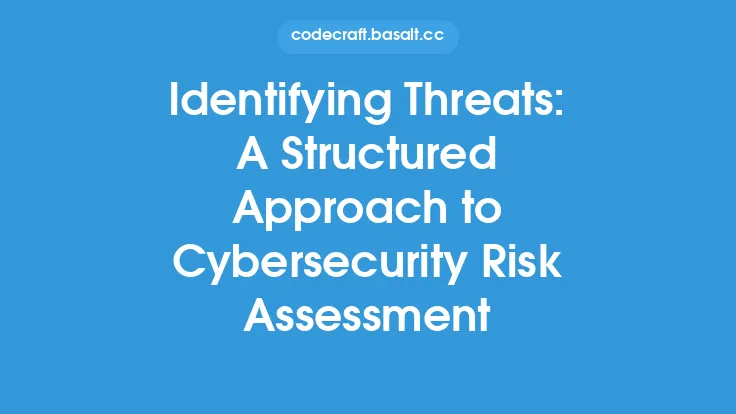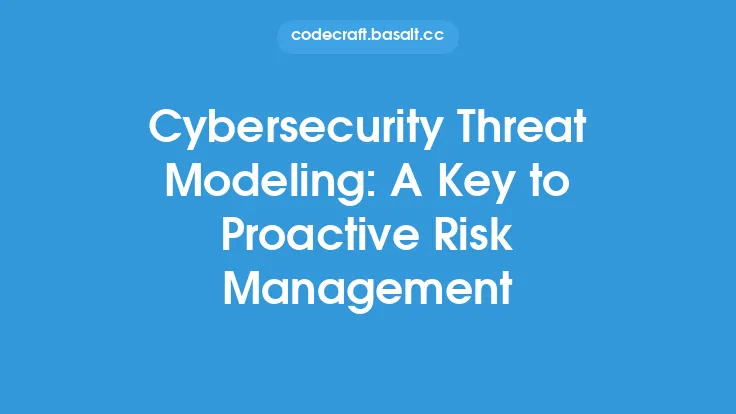In the realm of cybersecurity, managing risk is a critical component of protecting an organization's assets, data, and infrastructure from potential threats. Risk management in cybersecurity involves identifying, assessing, and mitigating risks to minimize the likelihood and impact of a security breach. This foundational approach to risk management is essential for organizations to ensure the confidentiality, integrity, and availability of their assets.
Introduction to Risk Management Concepts
Risk management in cybersecurity is based on several key concepts, including risk, threat, vulnerability, and asset. A risk is the potential for a threat to exploit a vulnerability, resulting in a negative impact on an asset. A threat is a potential occurrence that could compromise the security of an asset, such as a hacker or a malware attack. A vulnerability is a weakness in an asset that could be exploited by a threat, such as a software bug or a misconfigured system. An asset is anything of value to an organization, including data, systems, and infrastructure.
Risk Management Process
The risk management process in cybersecurity involves several steps, including risk identification, risk assessment, risk mitigation, and risk monitoring. Risk identification involves identifying potential risks to an organization's assets, including threats, vulnerabilities, and asset value. Risk assessment involves evaluating the likelihood and potential impact of each identified risk, as well as the effectiveness of existing controls. Risk mitigation involves implementing controls to reduce the likelihood or impact of a risk, such as implementing firewalls, intrusion detection systems, or encryption. Risk monitoring involves continuously monitoring the risk environment to identify new risks and assess the effectiveness of existing controls.
Risk Management Frameworks
Several risk management frameworks are available to help organizations manage risk in cybersecurity, including the National Institute of Standards and Technology (NIST) Cybersecurity Framework, the International Organization for Standardization (ISO) 27001 standard, and the Committee of Sponsoring Organizations (COSO) of the Treadway Commission framework. These frameworks provide a structured approach to risk management, including risk identification, risk assessment, risk mitigation, and risk monitoring. They also provide guidelines for implementing risk management controls, such as security policies, procedures, and standards.
Risk Assessment Techniques
Several risk assessment techniques are available to help organizations assess risk in cybersecurity, including qualitative and quantitative risk assessment. Qualitative risk assessment involves evaluating the likelihood and potential impact of a risk based on subjective criteria, such as expert judgment or experience. Quantitative risk assessment involves evaluating the likelihood and potential impact of a risk based on objective criteria, such as statistical analysis or mathematical modeling. Common risk assessment techniques include the Annualized Loss Expectancy (ALE) method, the Single Loss Expectancy (SLE) method, and the Fault Tree Analysis (FTA) method.
Risk Mitigation Strategies
Several risk mitigation strategies are available to help organizations mitigate risk in cybersecurity, including preventive, detective, and corrective controls. Preventive controls involve preventing a risk from occurring, such as implementing firewalls or intrusion prevention systems. Detective controls involve detecting a risk after it has occurred, such as implementing intrusion detection systems or security information and event management (SIEM) systems. Corrective controls involve correcting a risk after it has occurred, such as implementing incident response plans or disaster recovery plans.
Implementation and Maintenance
Implementing and maintaining a risk management program in cybersecurity requires a structured approach, including establishing a risk management team, developing a risk management plan, and implementing risk management controls. The risk management team should include representatives from various departments, including IT, security, and compliance. The risk management plan should include risk management policies, procedures, and standards, as well as risk assessment and mitigation strategies. Risk management controls should be implemented and maintained to ensure the confidentiality, integrity, and availability of an organization's assets.
Common Challenges and Best Practices
Several common challenges and best practices are associated with risk management in cybersecurity, including limited resources, lack of expertise, and inadequate risk assessment. To overcome these challenges, organizations should prioritize risk management, provide adequate resources and training, and continuously monitor and assess risk. Best practices include implementing a risk-based approach to cybersecurity, using a risk management framework, and continuously monitoring and assessing risk.
Conclusion
In conclusion, risk management is a critical component of cybersecurity that involves identifying, assessing, and mitigating risks to minimize the likelihood and impact of a security breach. By understanding risk management concepts, following a risk management process, and using risk management frameworks and techniques, organizations can effectively manage risk in cybersecurity. Implementing and maintaining a risk management program requires a structured approach, including establishing a risk management team, developing a risk management plan, and implementing risk management controls. By prioritizing risk management and following best practices, organizations can ensure the confidentiality, integrity, and availability of their assets and protect themselves from potential threats.
